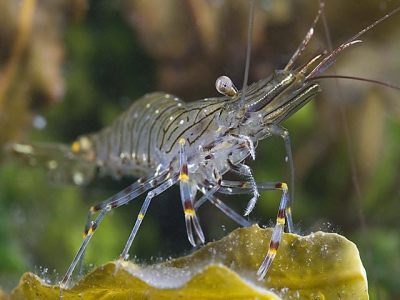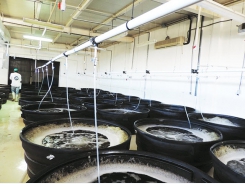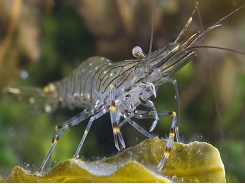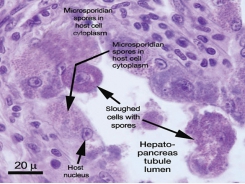Shrimp diseases - Blackening of gills ( black death disease)

Only one nutritional-disease syndrome of cultured penaeids has been described in detail. This disease, called black death or shrimp scurvy occurs in penaeids that are reared in culture systems lacking algae and receiving diets with insufficient ascorbic acid. Shrimp with black-death disease possess melanized hemocytic lesions in the epithelial and supportive connective tissues in the epithelial and supportive connective tissues of the general-body cuticle, the foregut and hindgut, the eyestalks and the gills. The lesions are most prominent in tissues with a high-collagen content. Addition of L-ascorbic acid to the shrimp’s ration or rearing shrimp in the presence of algae effectively prevents black death disease.
Shrimp fed a diet low in or without added L-ascorbic acid, developed blackened lesions (after 6 to 8 weeks in the subcuticular tissues of the general body surface, in the walls of the esophagus, stomach and hindgut and in the gills and gill cavity. Once clinical signs of the disease became apparent, affected shrimp ceased feeding and death usually followed within 24 to 72 hours. Opportunistic bacteria such as Vibrio spp. and Pseudomonas spp. often produced a terminal septicemia in affected shrimp. Mortalities of 1 to 5% per day due to this disease were observed on several occasions. Histopathology showed the blackened lesions to be, composed of masses of hemocytes and necrotic tissue. The black pigmentation of the lesions was due to melanin deposited in areas of heavy hemocyte infiltration, particularly near the centers of developing hemocyte nodules. No parasites or bacteria could be demonstrated in the centers of these nodules.
A number of disease syndromes of cultured penaeids are also accompanied by the presence of black (melanized), inflammed lesions in the gills. In fact, black gills may be a sign of toxic syndromes caused by chemical irritants including certain heavy metals, oils, ammonia, nitrite and ozene.
Related news
Tools

Phối trộn thức ăn chăn nuôi

Pha dung dịch thủy canh

Định mức cho tôm ăn

Phối trộn phân bón NPK

Xác định tỷ lệ tôm sống

Chuyển đổi đơn vị phân bón

Xác định công suất sục khí

Chuyển đổi đơn vị tôm

Tính diện tích nhà kính

Tính thể tích ao




 Shrimp diseases - Nutritional Diseases- Poor and reduced…
Shrimp diseases - Nutritional Diseases- Poor and reduced…  Microsporidian impacts shrimp production
Microsporidian impacts shrimp production